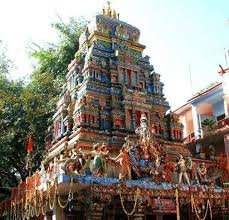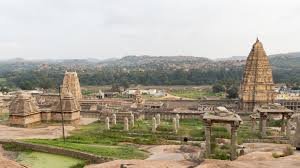
Bhimashankar Temple, nestled in the serene Sahyadri Hills of Maharashtra, is one of the twelve sacred Jyotirlingas of Lord Shiva. Known for its spiritual significance and breathtaking surroundings, the temple draws countless devotees and nature enthusiasts every year. It represents a blend of religious devotion, architectural beauty, and natural splendor, making it a must-visit pilgrimage site in India.
This blog delves into the history, cultural significance, beliefs surrounding the temple, and its contributions to the community.
The Historical Significance of Bhimashankar Temple
- Mythological Origins
The temple’s origins date back to ancient Hindu scriptures. According to legend, Bhimashankar marks the spot where Lord Shiva appeared to defeat the demon Bhim, who terrorized the local people. Lord Shiva’s manifestation as a Jyotirlinga here symbolizes the triumph of good over evil.
- Architectural Heritage
Bhimashankar Temple showcases Nagara-style architecture, blending simplicity with intricate carvings. Built during the 13th century, the temple has withstood the test of time. The craftsmanship highlights ancient India’s artistic brilliance, with carvings depicting deities, mythological stories, and floral patterns.
- Influence of Rulers
Historical records suggest that the Maratha Empire played a significant role in the temple’s development. Rulers like Shivaji Maharaj contributed to its maintenance, ensuring its sanctity and grandeur endured for generations.
Why Do People Visit Bhimashankar Temple?
- To Seek Spiritual Peace
Devotees visit Bhimashankar Temple to connect with the divine energy of Lord Shiva. They believe that offering prayers here cleanses sins and brings inner peace. The temple serves as a sanctuary for those seeking spiritual growth.
- To Witness the Jyotirlinga
As one of the twelve Jyotirlingas, Bhimashankar holds immense religious significance. Pilgrims believe that the divine energy of the Jyotirlinga blesses them with protection, prosperity, and spiritual enlightenment.
- Nature’s Serenity
Located amidst dense forests and lush greenery, the temple offers a serene escape from the chaos of city life. Visitors are captivated by the Bhimashankar Wildlife Sanctuary, which surrounds the temple. This sanctuary is home to diverse flora and fauna, including the Indian Giant Squirrel, locally known as Shekru.
- Adventure and Pilgrimage Combined
The trek to Bhimashankar Temple adds an element of adventure for many visitors. The path, adorned with scenic views, waterfalls, and rocky terrains, makes the journey both challenging and rewarding.
Beliefs Surrounding Bhimashankar Temple
- The Power of Lord Shiva
Devotees believe that Lord Shiva’s presence at Bhimashankar offers divine protection and guidance. They trust that prayers offered here can eliminate obstacles and fulfill desires.
- Sacred Origins of the River Bhima
The temple is also significant as the origin of the Bhima River, which flows through Maharashtra and Karnataka. Pilgrims consider bathing in the river sacred, believing it purifies their soul and mind.
- A Path to Liberation
Many believe that visiting Bhimashankar Temple can lead to Moksha—freedom from the cycle of birth and rebirth. This belief draws spiritual seekers from across the globe.
- Festival Significance
During festivals like Maha Shivaratri, the temple becomes a hub of devotion and celebration. Thousands gather to participate in rituals, chant prayers, and seek blessings. Devotees feel that such participation enhances their spiritual journey.
Funds and Their Role in Community Development
- Revenue Sources
Bhimashankar Temple generates significant revenue through donations, offerings, and fees for special rituals. Devotees often donate generously, expressing their gratitude and devotion.
- Infrastructure Maintenance
The funds are utilized to maintain the temple’s infrastructure. Authorities ensure the temple remains clean, organized, and accessible to all visitors. Regular renovations preserve its historical and architectural integrity.
- Support for Local Economy
The temple plays a crucial role in boosting the local economy. Vendors, artisans, and service providers benefit from the influx of pilgrims. The sale of religious items, souvenirs, and local delicacies supports livelihoods in the region.
- Social Contributions
The temple trust invests in community development initiatives. These include funding for education, healthcare, and cultural programs. By uplifting the local community, the temple extends its influence beyond spiritual boundaries.
Importance of Bhimashankar Temple
- Religious Significance
Bhimashankar Temple serves as a sacred site for millions of devotees. Its status as a Jyotirlinga enhances its spiritual importance, making it a pivotal destination in the religious landscape of India.
- Architectural Legacy
The temple stands as a testament to India’s rich architectural heritage. Its intricate carvings and serene setting inspire awe among visitors, offering a glimpse into the artistry of ancient times.
- Ecological Significance
Located within the Western Ghats, a UNESCO World Heritage site, Bhimashankar Temple contributes to ecological preservation. The surrounding wildlife sanctuary is a haven for biodiversity, emphasizing the harmonious coexistence of spirituality and nature.
- Cultural Influence
The temple serves as a cultural hub, hosting festivals, rituals, and events that preserve traditional practices. It unites devotees from different regions, fostering a sense of community and shared heritage.
How to Reach Bhimashankar Temple
- By Air
The nearest airport is in Pune, approximately 125 kilometers away. From there, visitors can take a taxi or bus to the temple.
- By Train
The closest railway station is in Karjat, which connects to major cities. Visitors can then travel by road to Bhimashankar.
- By Road
Bhimashankar Temple is well-connected by road. State transport buses and private taxis operate frequently from Pune and Mumbai. The scenic drive through the Sahyadri Hills adds charm to the journey.
A Spiritual Journey to Bhimashankar
Visiting Bhimashankar Temple is more than a pilgrimage; it is a journey of self-discovery and spiritual growth. The peaceful ambiance, coupled with the temple’s divine energy, leaves visitors feeling rejuvenated.
The trek to the temple provides an opportunity to connect with nature. Walking through the forest, listening to the sound of birds, and witnessing the beauty of waterfalls evoke a sense of wonder. As devotees reach the temple, they often feel a surge of devotion and gratitude.
Participation in rituals, such as Abhishek and Aarti, deepens the spiritual experience. Many devotees leave the temple with a renewed sense of purpose and faith.
Conclusion
Bhimashankar Temple, with its profound spiritual significance and stunning natural surroundings, stands as a beacon of devotion and heritage. Its history, rooted in mythology and enriched by architectural brilliance, inspires awe and reverence.
Whether you visit as a pilgrim or a traveler, Bhimashankar Temple promises an experience that nurtures the soul and invigorates the mind. Its role as a spiritual, cultural, and ecological treasure ensures its place as a cherished landmark in India’s religious landscape. A journey to Bhimashankar Temple is not just a visit—it’s a transformative experience that stays with you forever.





